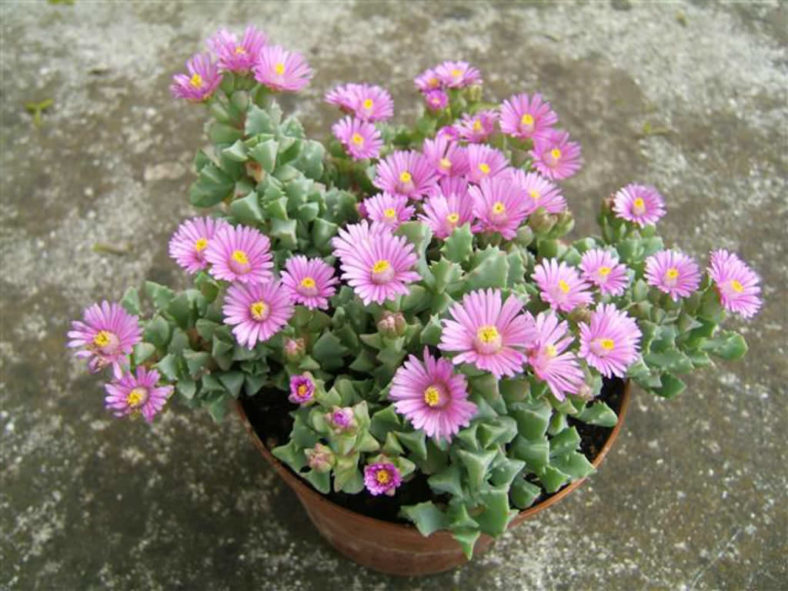
Oscularia deltoides is a lovely succulent plant that produces small pink or purple flowers. Here's a step-by-step guide on how to grow Oscularia deltoides succulent flower:
Light and temperature: Oscularia deltoides thrives in full sun to partial shade. Place the plant in a location where it can receive at least 4-6 hours of direct sunlight per day. It prefers moderate to warm temperatures, ideally between 60-85°F (15-29°C).
Soil: Use a well-draining soil mix specifically formulated for succulents or cacti. A mix of potting soil, coarse sand, and perlite can work well. Ensure the soil is well-draining to prevent waterlogged conditions that can lead to root rot.
Planting: Select a suitable container with drainage holes to prevent water accumulation. Plant the Oscularia deltoides in the soil, ensuring the roots are covered but the leaves remain above the soil surface.
Watering: Succulents like Oscularia deltoides prefer infrequent watering but thorough soaking. Water the plant deeply, allowing the soil to dry out completely between waterings. Overwatering can lead to root rot, so it's crucial to avoid excessive moisture.
Fertilization: Oscularia deltoides does not require heavy feeding. During the active growing season in spring and summer, you can apply a diluted succulent or cactus fertilizer every few weeks, following the package instructions. Avoid fertilizing during the dormant period in winter.
Propagation: Oscularia deltoides can be propagated through stem cuttings. Allow the cuttings to callus for a few days before placing them in well-draining soil. Keep the soil lightly moist until new roots develop.
Pruning: Prune any leggy or overgrown stems to maintain a compact and attractive shape. You can also pinch back the stems to encourage bushier growth.
Dormancy: Oscularia deltoides experiences a period of dormancy during the winter months. Reduce watering during this time, allowing the soil to dry out more between waterings. Provide cooler temperatures (around 50-60°F or 10-15°C) to help the plant enter dormancy.
Pests and diseases: Oscularia deltoides is generally resistant to pests and diseases. However, keep an eye out for common succulent pests such as mealybugs or scale insects. Treat any infestations promptly using appropriate methods like insecticidal soap or neem oil.
Overwintering: If you live in a colder climate, you may need to bring the plant indoors or provide protection during winter. Ensure the plant receives sufficient light and maintain cooler temperatures to mimic its natural dormancy period.
By following these guidelines, you can enjoy the beautiful pink or purple flowers of your Oscularia deltoides succulent. Remember to adjust care according to your specific growing conditions and observe the plant for any signs of stress or disease.

No comments:
Post a Comment